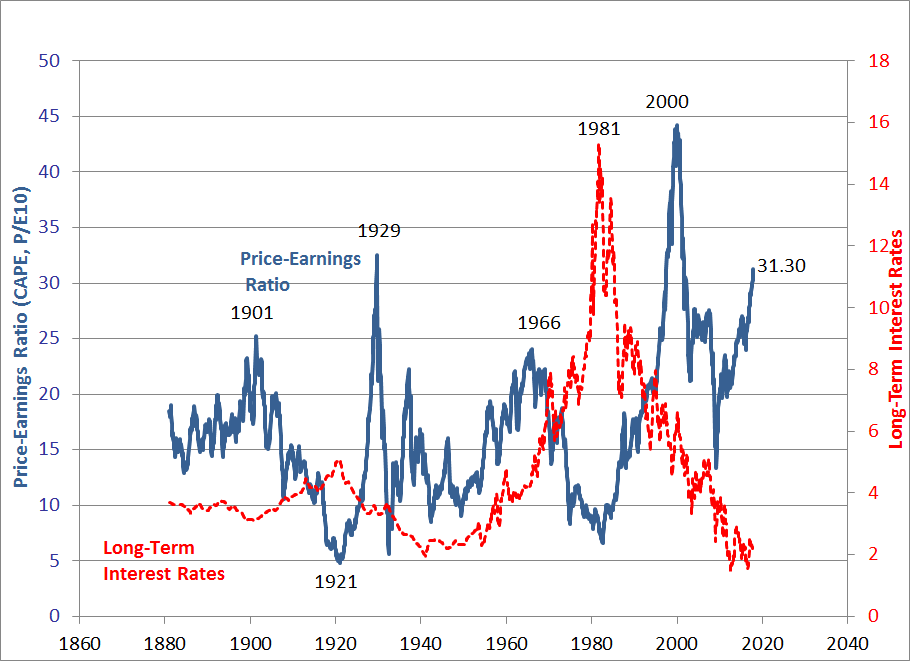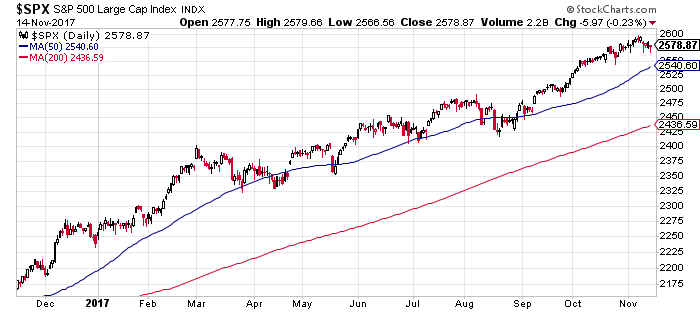The US stock market has defied the odds this year, or so it appears, by running hotter and staying calmer for longer than expected, based on a variety of risk metrics. It’s unclear if this is due to a failure of the risk metrics, irrational exuberance run amock, or both.
The CAPE ratio for instance – a measure of the market’s valuation – has been elevated in recent history, rising to the second-highest level since the early 1930s. History suggests that the S&P 500’s expected return is low, perhaps negative, when CAPE is high.

Alternative measures of stock market risk have been issuing warning signs this year as well. An econometric estimate of bubble risk, for instance, has flashing red for months. Back in February, for example, the data suggested that the potential for trouble was on the rise.

Mr. Market, however, apparently didn’t get the memo. The S&P 500 has continued to rise, with minimal volatility along the way.

An econometric estimate of bear/bull regimes via a Hidden Markov modelconfirms that the trend has been your friend in 2017.

Confused? You’re not alone. The value of risk management vis-à-vis the US stock market has been on holiday this year, prompting some pundits to wonder if the concept has hit a wall.
Anything’s possible, but managing expectations is no less important for risk management. In particular, it’s all about probabilities, which is to say that estimating risk is risky, too. Or, to state the obvious, there are no 100% probabilities when it comes to projecting the potential for trouble. As such, risk management – in all its guises – is destined for some degree of failure at times.
Then again, if you’re expecting instant gratification and flawless signals with risk-management tools, you’re expecting too much. Investing would certainly be easier if we had foolproof methods to estimate risk, draw conclusions, and reap the rewards in due course. But risk management is risky, too.










Leave A Comment